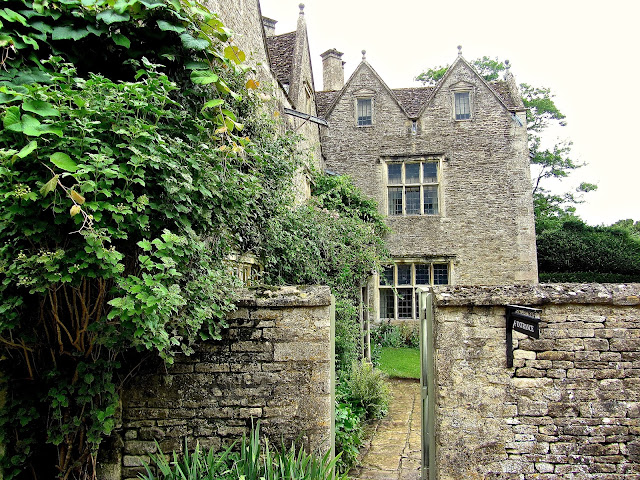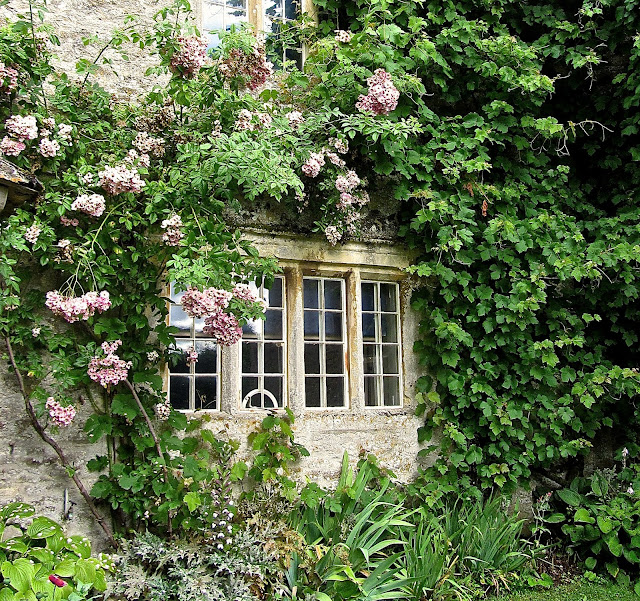Last week I discovered Nuffield Place, home to William Morris and his wife. It is only about 20 minutes from where we live. I didn't know much about William Morris (the car maker, not the Arts and Crafts designer), or his cars or philanthropy. After visiting his home, I was determined more. I learned that in the 1930s he was one of the wealthiest men in the world who gave away his vast wealth. In my research, I came across this article which I found fascinating and which explains the best bits of of Nuffield and William Morris's legacy.
By Anita Singh 6:40AM BST 27 Apr 2011
William Morris: the humble lifestyle of Britain's greatest philanthropist revealed
The home of William Morris, owner of the Morris Motor Company and at one time Britain's richest self-made man, is to be opened to the public after decades under lock and key.
Nuffield Place in Oxfordshire has been perfectly preserved as a 1930s "time capsule" since the industrialist's death. It has now passed to the National Trust and offers a glimpse of a bygone era.
Morris, later Lord Nuffield, was Britain's greatest ever philanthropist and gave away over £30m of his fortune, equivalent to £700m in today's money. Yet, despite his enormous wealth, his lifestyle could not have been more modest.
So uninterested was he in life's luxuries that his bedroom floor was carpeted with off-cuts from the Morris factory in Cowley. What appears to be a wardrobe opens up to reveal a miniature workshop filled with spanners, screwdrivers and Phillips Stick-a-Soles which he used to repair his shoes rather than buy new ones.
Morris's frugality is testament to his humble beginnings. Born in 1877, he left school at 15 and started work as a bicycle repairman before turning his attention to motor cars. He designed his first car, the Morris Oxford, in 1912 and the company became such a force in British industry that he was awarded a baronetcy in 1934.
There is no collection of cars in the drive - Morris drove a Wolseley, a gift from his workforce, for many years and never sought to upgrade it. He famously hated the Morris Minor, likening it to a "poached egg".
He took his baronial title from the village of Nuffield, near Henley-on-Thames, where he bought the four-bedroom home in 1933 with his wife, Elizabeth, and remained until his death in 1963.
The furnishings are little changed from the 1930s, from the cocktail cabinet and gramophone in the drawing room to the dining room table laid with the couple's china and glassware. On display is a pink glass in which Morris's secretary served him a daily dose of milk of magnesia on a silver salver.
Morris was a dedicated smoker and the house features assorted paraphernalia, from an original pullmatch stand and ashtray full of cigarettes to a book of sheet music entitled Songs for Smokers.
He hated London and preferred to stay in Oxfordshire rather than mingle in high society. The only clues to his station in life are a signed photograph of Queen Elizabeth on the dresser and the velvet and ermine robes that he wore to the coronation of George VI in 1937.
The couple had no children and Morris set about dividing his fortune amongst charitable causes. He donated millions to medical research and funded Nuffield College, Oxford. During the polio epidemic of the 1940s and 1950s, he ordered the manufacture of 5,000 iron lungs and distributed them throughout the Commonwealth.
When Morris died in 1963, four years after the death of his wife, he left the house to Nuffield College. It was opened occasionally by volunteers but will now be opened permanently by the National Trust, which needs to raise £600,000 to do so.
Richard Henderson, National Trust general manager, said: "Despite Lord Nuffield's extraordinary philanthropy and achievements, he remains relatively unknown. His home is a wonderful time capsule without any of the 'show' of a multi-millionaire and reveals so much about the man who changed many people's lives for the better."


The living room
The kitchen
Mrs. Morris's Bedroom. She was an excellent seamstress and continued to make her own clothes and curtains and bed linens for their home despite their great wealth.
William turned his closet into a mini workshop so he could tinker or work on an idea any time of day or night.
The siting room with state of the art entertainment for it's day
A Morris Minor van -- pre World War II


















































